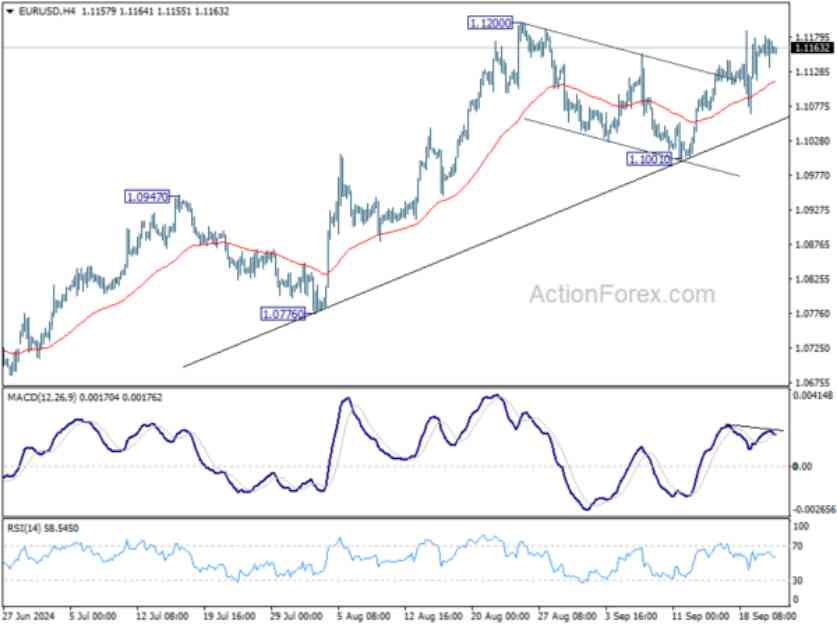EUR/USD Forecast: Analyzing the Daily Trends and Predictions
The EUR/USD currency pair has been experiencing some fluctuations in recent trading sessions, with the intraday bias currently turning neutral as the 4-hour MACD has crossed below the signal line. While some consolidations are anticipated below the 1.1200 level, further rally is expected as long as the crucial support level at 1.1001 holds firm. A breakthrough above 1.1200 could potentially target the high of 1.1274, with a firm break indicating a resumption of the larger uptrend.
In the bigger picture, the prior breakthrough of the resistance level at 1.1138 suggests that the corrective pattern from 1.1274 may have already completed at 1.0665. A decisive break of the 1.1274 level, which represents the 2023 high, will confirm the continuation of the overall uptrend from the 2022 low of 0.9534. The next target would then be the 61.8% projection of the move from 0.9534 to 1.1274, calculated from 1.0665, at the level of 1.1740. This scenario is likely to be favored as long as the resistance-turned-support level at 1.0947 remains intact.
Factors Influencing the EUR/USD Exchange Rate
Several key factors are influencing the EUR/USD exchange rate and are worth considering when making predictions for the currency pair. One significant factor is the monetary policy decisions of the European Central Bank (ECB) and the Federal Reserve (Fed). Any changes in interest rates or quantitative easing programs by these central banks can have a direct impact on the value of the euro relative to the US dollar.
Another important factor to monitor is economic data releases from both the Eurozone and the United States. Indicators such as GDP growth, inflation rates, unemployment figures, and manufacturing data can all influence market sentiment and drive movements in the EUR/USD exchange rate. Traders and investors closely watch these data points to assess the health of the respective economies and make informed trading decisions.
Geopolitical events and global economic developments can also play a significant role in shaping the direction of the EUR/USD exchange rate. Factors such as trade tensions, political instability, and changes in global market sentiment can all impact the currency pair. Traders need to stay informed about these events and their potential implications for the euro and the dollar.
Technical Analysis and Predictions for EUR/USD
Technical analysis is a key tool used by traders to forecast future price movements based on historical data and chart patterns. In the case of the EUR/USD currency pair, analysts often look at key levels of support and resistance, moving averages, and momentum indicators to make predictions about the direction of the exchange rate.
One popular technical indicator used by traders is the Moving Average Convergence Divergence (MACD), which can help identify changes in the momentum of a currency pair. As mentioned earlier, the intraday bias for EUR/USD has turned neutral with the 4-hour MACD crossing below the signal line. This indicates a potential period of consolidation before a possible resumption of the uptrend.
Support and resistance levels are also important considerations in technical analysis. Traders often look for key levels where the price is likely to encounter barriers or reversals. In the case of EUR/USD, the support at 1.1001 and the resistance-turned-support at 1.0947 are critical levels to watch for potential price movements.
In conclusion, the EUR/USD exchange rate is influenced by a variety of factors, including monetary policy decisions, economic data releases, geopolitical events, and technical analysis. By carefully analyzing these factors and staying informed about market developments, traders can make informed predictions about the future direction of the currency pair.

















